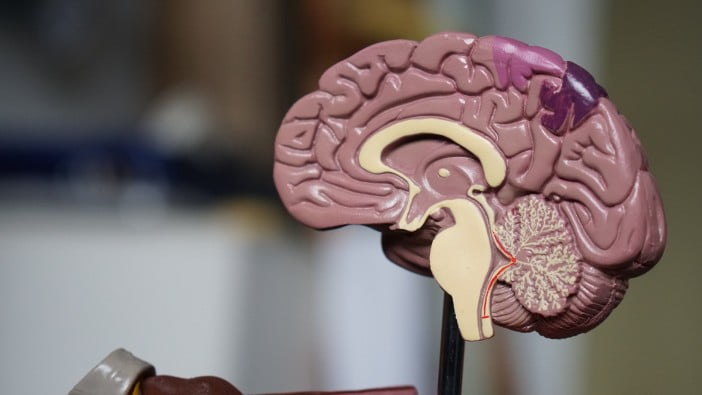Vaping is relatively new when compared to traditional smoking. Some people think that vaping is less harmful than smoking because it does not produce smoke. However, the long-term effects are yet to be known. As such, it’s not possible to conclusively argue that vaping is a safer alternative to smoking though some researchers suggest so.
Essentially, vaping entails the use of an electronic cigarette. This is a battery-powered device with a heating element and a reservoir for holding the vaping liquid. This liquid can have varying chemicals. Some of the commonly used chemicals include nicotine, THC, CBD, and flavorings. When a person puffs an e-cigarette, they activate the heating element. This heats the liquid to produce a vapor or aerosol that is inhaled by the user.
Today, vaping is a common and popular habit across the world. Some teens even consider having the best e-cig in the market cool and fashionable. And, people across ages are starting to vape or switching from smoking traditional cigarettes to vaping. But how safe is vaping? Here are some of the main threats of vaping.
Can cause cancer

People have linked tobacco smoking to cancer for a long time. But, researchers are starting to unearth the health risks of vaping. For instance, an analysis of electronic cigarettes by the FDA from leading brands indicated that they contain hazardous chemicals and carcinogens. These chemicals include diethylene glycol. This is a component of antifreeze. Such chemicals are harmful to adults and adolescents.
Other researchers have also warned that even the best e-cigarettes have potential carcinogenic materials. Consequently, the World Health Organization, the United States Surgeon General, and the British Medical Association have warned people about their dangers.
Can affect brain development

The developing brains of children are highly susceptible to drug addiction. Vaping provides a smokeless way of inhaling nicotine. And nicotine is addictive. Some e-cigarettes have dangerously high amounts of nicotine.
Some of these devices have as much as twice the amount of nicotine contained in traditional cigarettes. Research has shown that children can experience mood disorders and reduced control of impulses when they inhale the secondhand vapor that contains nicotine. What’s more, nicotine affects the prefrontal cortex negatively. This brain part is responsible for decision-making, attention, planning, and judgment. Additionally, nicotine is harmful to adults because it can affect heart health negatively.
Some of the negative effects of vaping nicotine-containing e-liquid include:
- Narrowing the arteries
- Increasing heart rate and blood pressure
- A possible heart attack because nicotine can lead to constriction of arterial walls
Some people use the best e-cigs in the market to vaporize THC. This is a psychoactive ingredient that is derived from cannabis. However, the Centers for Disease Control and Prevention have noted that THC exposure, as well as mixing nicotine, vitamin E, and THC, could be the cause of the recently reported lung injuries. Vitamin E is used as an additive in vape cartridges.
Has been associated with lung injuries

As of February 2020, CDC had received reports of 2,897 deaths or hospitalized EVALI cases from the District of Columbia, 50 states, and 2 U.S territories. EVALI is a lung injury that has been associated with vaping. Some of the symptoms of this injury include breathing difficulties, rapid coughing at the onset, weight loss, diarrhea, vomiting, and nausea.
According to physicians, these symptoms can be attributed to while blood cells or oil buildup inside the lings. CBD and THC, which are the major cannabis ingredients, are heated up when a person vaporizes. Eventually, they are converted into the vapor that a person inhales.
Anybody that uses electronic cigarettes should be taken to an emergency department the moment they exhibit these symptoms.
Can cause addiction

It’s no doubt that nicotine is a highly addictive substance. So, even when a person uses the best electronic cigarette to vaporize a nicotine-containing liquid, they can develop an addiction. Nicotine is as addictive as cocaine and heroin.
Once inhaled, nicotine is absorbed into a person’s bloodstream. Consequently, it starts to affect their brain within 10 seconds. For instance, it can disrupt how acetylcholine, a neurotransmitter, relates to receptors to which it attaches to. Acetylcholine is responsible for memory, muscle contraction, and cognition, among other things.
Once nicotine attaches to acetylcholine receptors instead of acetylcholine, it triggers several chemical reactions. These reactions are responsible for short-lived feel-good sensations that include alertness, euphoria, calmness, and relaxation. These sensations subside within minutes because the body removes these substances quickly.
Nevertheless, the pleasurable effects of nicotine and its short half-life make a person need another dose faster. This leads to a vicious addiction cycle.
Essentially, inhaling nicotine increases the production of dopamine regardless of the used vessel. And, the variation of dopamine levels motivates a person to inhale more nicotine. This explains why vaping might not help a person quit smoking.
Some researchers have even argued that vaping can be a gateway to traditional smoking. In some cases, individuals that start vaping end up smoking when they lack e-cigarettes, yet they can easily buy traditional cigars. Others end up using both traditional and electronic cigarettes.
Can cause physical injuries
Until recently, the vaping industry was largely unregulated. Even today, vaping is under-regulated. As such, some of the vaping devices in the current market do not meet the required safety standards. Some of them come with defective batteries that can explode when being charged. What’s more, some vaping products can cause explosions and fires. Essentially, lithium-ion batteries are likely to be a hazard if not stored, charged, used, or carried properly.
Final thoughts
Some researchers have argued that vaping is less harmful than traditional smoking because it doesn’t involve inhaling smoke. However, the practice is not completely harmless even when a person uses the best e-cigarette. Therefore, some experts recommend switching from smoking to vaping for those unable to quit. However, they recommend abstaining from both smoking and vaping for people that are yet to start or try any of these habits.




Share Your Thoughts